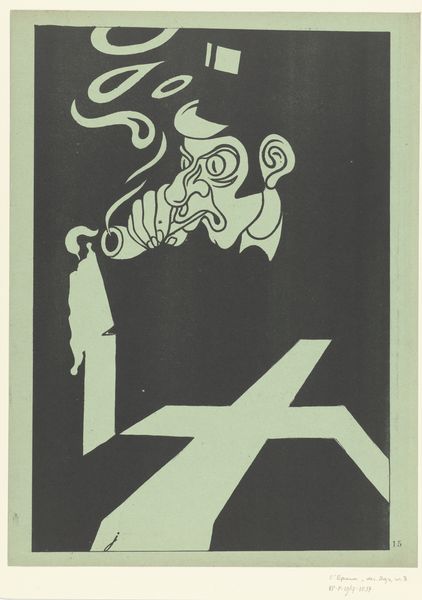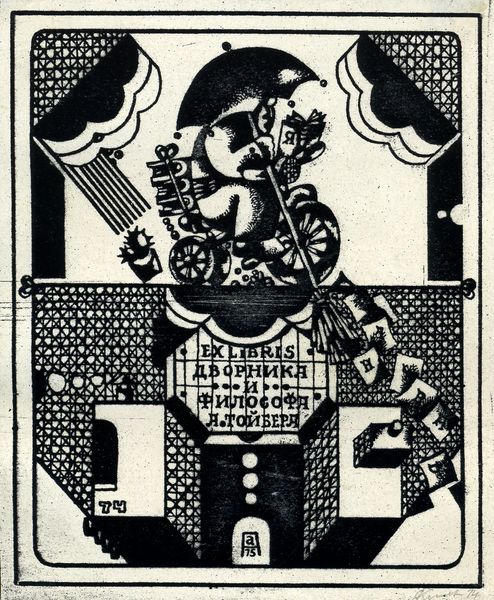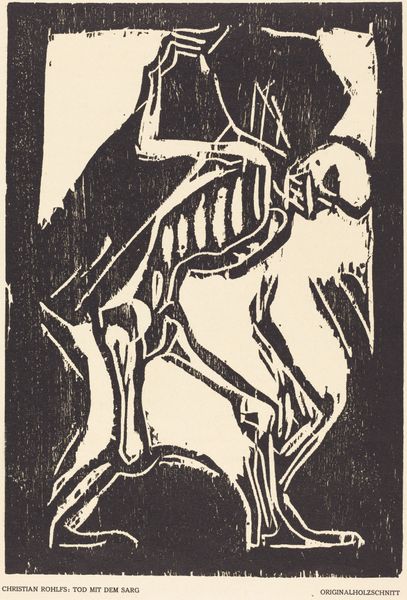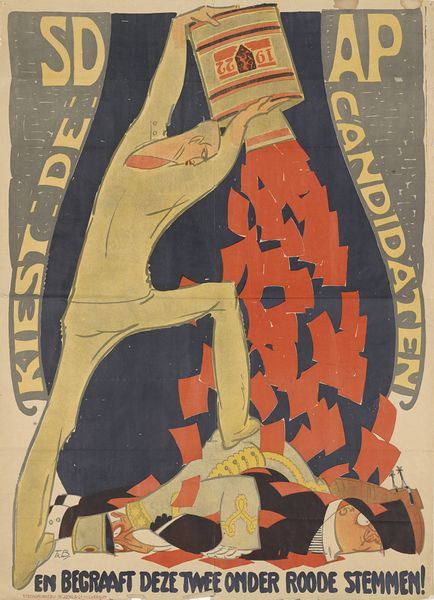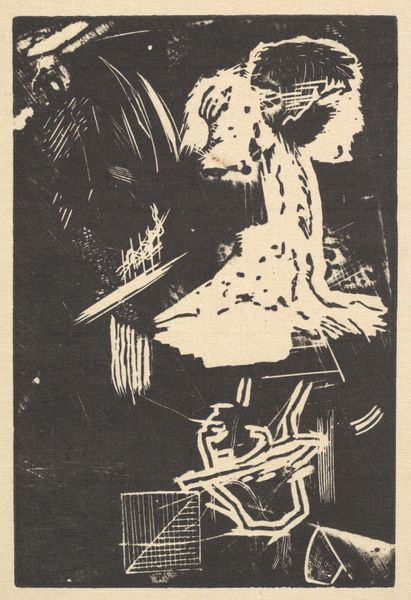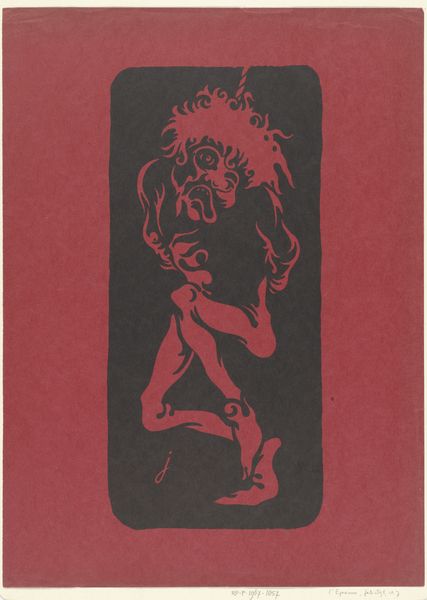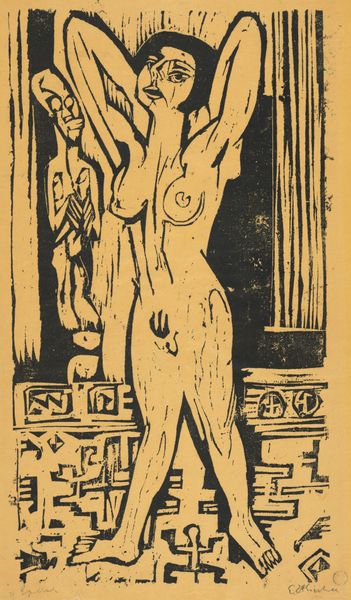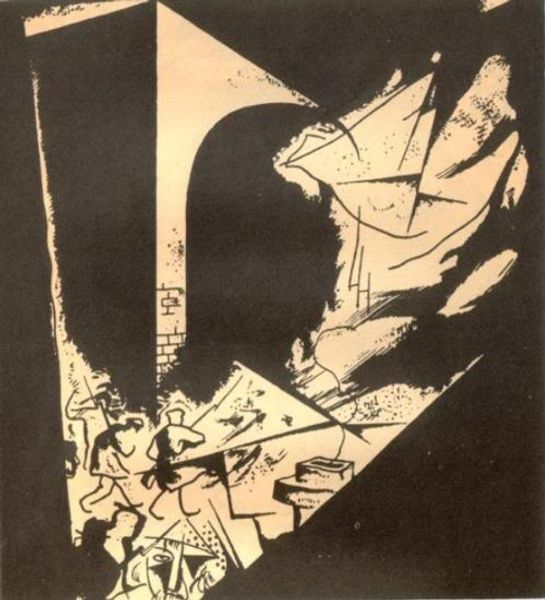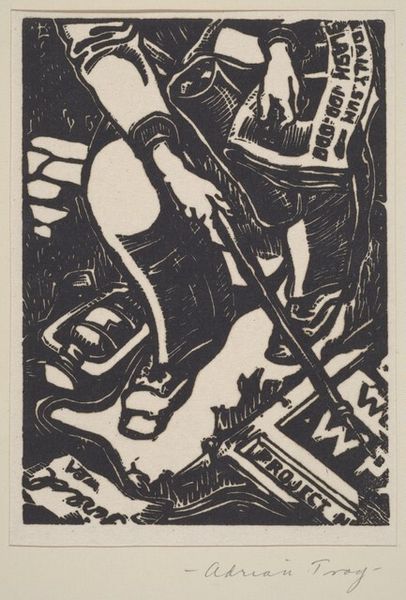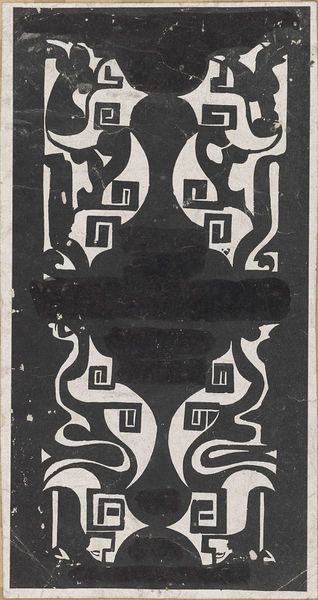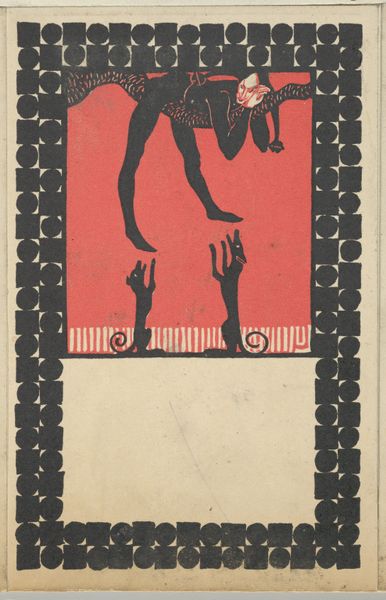
lithograph, print, poster
#
portrait
#
art-nouveau
#
lithograph
#
linocut
# print
#
figuration
#
linocut print
#
poster
Copyright: Public domain
Curator: Ethel Reed's lithograph poster "Time and the Hour" from 1896 immediately grabs your attention with its graphic simplicity, doesn't it? The colours are striking. Editor: It certainly does! The first thing that hits me is the layering – the almost crude, blocky application of red and grey seems almost... industrial. It's so bold and graphic, I can imagine seeing it plastered across the city. Curator: Precisely, and consider the social and cultural currents of the late 19th century. As a female artist making a name for herself at this moment in history, Reed was working in the context of growing visibility and advocacy, the New Woman, challenging patriarchal norms, carving out a space for herself. The title itself feels assertive, demanding space and time. Editor: Thinking about it more from the materiality, though... Lithography allows for that kind of mass production and dissemination of images. The contrast of textures is so eye-catching: smooth expanses of colour against almost textile-like patterns. What sort of audience do you think Reed was intending to address in a time when posters served both commerce and cultural discourse? Curator: The interplay between commerce and art in fin-de-siècle culture is incredibly relevant here. Given Reed's involvement in Boston's artistic and literary circles, I suggest that her works speak to a developing urban class: art that mirrored an appetite for culture and aesthetics. And yet, her life wasn't immune to struggles. It adds layers to what feels like an illustration, becoming a comment on a woman finding a space in an industry built by and for men. Editor: Absolutely. Considering the printing process adds another dimension. How did the labor practices, access to workshops, and gender divisions of labor influence Reed's creative freedom and choices with material? Also, it's compelling how the industrial reproducibility enabled a wider distribution, intersecting high art and everyday commodity and also broadening exposure for the artist. Curator: That is definitely true, it reminds me of how profoundly intersectionality affects artists' agency and output, then as now. What kind of freedom do you really have? Considering these factors gives us more insights, I agree. Editor: Ultimately, a piece like this proves how crucial an analysis of method, materiality, production conditions and socio-political situation all help illuminate what is compelling, powerful, and affecting within the image itself. Curator: Absolutely, approaching the art by examining cultural currents alongside the work provides more insightful understandings of artistic contributions from creators often erased from canonical narratives.
Comments
No comments
Be the first to comment and join the conversation on the ultimate creative platform.
